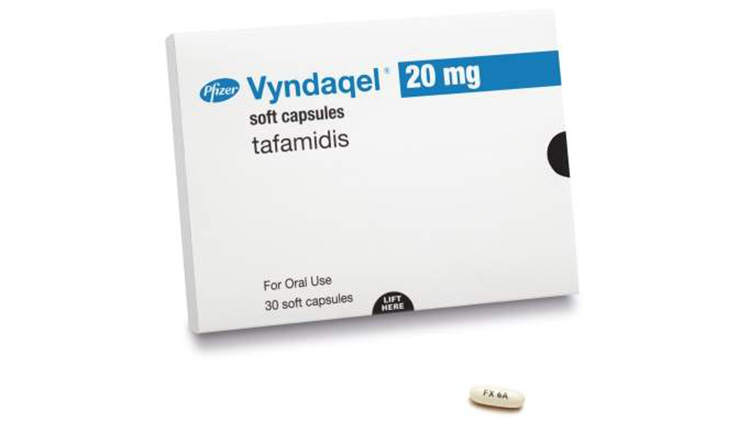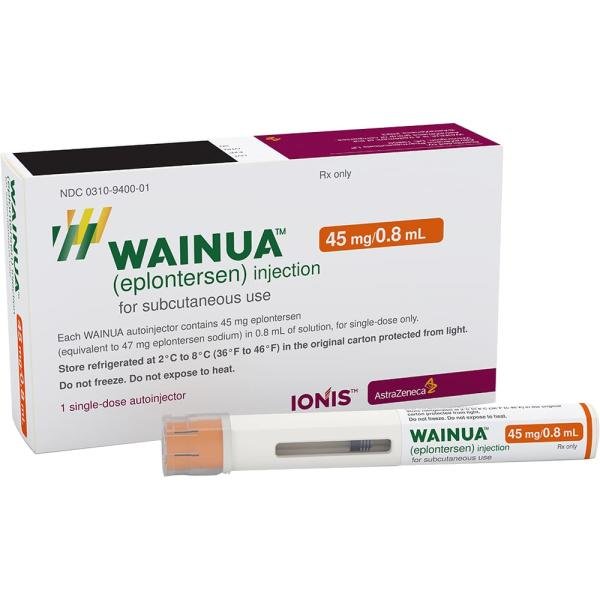New Amyloidosis treatments 2024
New Amyloidosis Treatments 2024
Amyloidosis is a rare and complex disease characterized by the abnormal accumulation of amyloid proteins in organs and tissues throughout the body, which can disrupt normal function. There are several types of amyloidosis, with the most common being AL (light chain) amyloidosis, where the amyloid is made from parts of antibodies produced by abnormal plasma cells. Another type is AA (secondary) amyloidosis, often associated with chronic infectious or inflammatory diseases, and hereditary and age-related forms also exist. Symptoms of amyloidosis vary widely depending on the organs affected but may include fatigue, weight loss, swelling, numbness, or pain in the hands and feet. Diagnosis typically involves a combination of blood tests, urine tests, imaging, and a biopsy to confirm the presence of amyloid deposits.
Treatment options for amyloidosis depend on the type and severity of the condition, as well as the specific organs involved. For AL amyloidosis, chemotherapy drugs that target abnormal plasma cells, such as bortezomib, cyclophosphamide, and dexamethasone, are commonly used. In some cases, a stem cell transplant may be considered to replace diseased bone marrow. For AA amyloidosis, treating the underlying inflammatory condition is crucial, and medications such as colchicine can help reduce inflammation and prevent further amyloid deposition. Supportive treatments, including diuretics for swelling and medications for heart or kidney problems, are also important in managing symptoms and improving quality of life.

Treatment options
| Treatment option | Estimated cost | Efficacy | Eligibility |
|---|---|---|---|
| Chemotherapy | $1,000 - $10,000 | Varies by regimen and patient response | Patients with AL amyloidosis |
| Stem cell transplantation | $100,000 - $200,000 | Can be highly effective in selected patients | Patients with AL amyloidosis who are eligible for transplant |
| Vyndaqel (tafamidis) | $225,000 - $250,000 | Slows progression of hereditary ATTR amyloidosis | Patients with hereditary ATTR amyloidosis with cardiomyopathy |
| Wainua | Not available | Experimental, efficacy not established | Currently in clinical trials, not widely available |
| Anti-inflammatory drugs | $10 - $100 | May provide symptomatic relief | Patients with inflammatory component to their amyloidosis |
| Organ transplantation | $200,000 - $800,000 | Can be life-saving for organ failure due to amyloid deposits | Patients with organ failure and suitable for transplantation |
| Targeted therapies (e.g., daratumumab) | $10,000 - $30,000 | Effective in some patients with AL amyloidosis | Patients with AL amyloidosis, often in combination with other treatments |
| Experimental treatments (e.g., NEOD001) | Cost varies in clinical trials | Not yet established | Patients enrolled in clinical trials |
Treatments options in detail
Treatment Options for Amyloidosis
Amyloidosis treatment strategies are tailored to the specific type of amyloidosis a patient has and are designed to manage symptoms, limit the production of amyloid protein, and support organ function. The most common forms of amyloidosis include AL (light chain) amyloidosis, AA (secondary) amyloidosis, and hereditary (familial) amyloidosis, each requiring different treatment approaches.
Standard Treatments for AL Amyloidosis
For AL amyloidosis, the cornerstone of treatment is chemotherapy, similar to that used for multiple myeloma. The goal is to reduce the production of abnormal light chains by plasma cells. Standard chemotherapy regimens may include bortezomib, cyclophosphamide, and dexamethasone (CyBorD). Autologous stem cell transplantation is another option for eligible patients, where high-dose chemotherapy is followed by the infusion of the patient's own stem cells to rebuild the bone marrow.
Standard Treatments for AA Amyloidosis
In AA amyloidosis, the focus is on treating the underlying inflammatory condition that is causing the production of the amyloid A protein. This often involves the use of anti-inflammatory medications and disease-modifying antirheumatic drugs (DMARDs) such as methotrexate or tumor necrosis factor (TNF) inhibitors. Colchicine may also be used to reduce inflammation, particularly in patients with familial Mediterranean fever (FMF).
Standard Treatments for Hereditary Amyloidosis
Hereditary amyloidosis treatments depend on the type of mutation and the organs involved. Liver transplantation may be considered for some types of hereditary amyloidosis, as the liver is the source of the mutant protein. Tafamidis is a medication that has been approved to treat polyneuropathy caused by hereditary transthyretin-mediated amyloidosis (hATTR).
Supportive Treatments
Supportive treatments are crucial for managing organ involvement and symptoms in all types of amyloidosis. These may include diuretics for fluid overload, medications to control heart rate and blood pressure, and anticoagulants to prevent blood clots. Dietary changes and supplements may also be recommended to support nutritional status.
Treatment with Vyndaqel (Tafamidis)
Vyndaqel (tafamidis) is a medication approved by the FDA for the treatment of the cardiomyopathy of wild type or hereditary transthyretin-mediated amyloidosis in adults to reduce cardiovascular mortality and related hospitalization. Tafamidis works by stabilizing the transthyretin protein, preventing its misfolding and aggregation into amyloid fibrils. This can help preserve heart function and improve quality of life.
Off-Label Use of Medications
Some medications may be used off-label for the treatment of amyloidosis. This means the medication is used in a manner not specified in the FDA's approved packaging label. Off-label drug use is legal and common, and it allows physicians to use their discretion to prescribe medications they believe will benefit their patients. For example, rituximab, an anti-CD20 monoclonal antibody, is sometimes used off-label in combination with chemotherapy for AL amyloidosis.
Experimental Treatments
Experimental treatments for amyloidosis are being investigated in clinical trials. These include new chemotherapy agents, monoclonal antibodies targeting amyloid deposits, and small molecules designed to disrupt the formation of amyloid fibrils or enhance their clearance. Patients may consider enrolling in clinical trials to access these potential treatments.
Treatment with Wainua
Wainua, also known as AG10 or acoramidis, is an investigational drug that, like tafamidis, aims to stabilize the transthyretin tetramer and prevent the formation of amyloid fibrils. While it is not yet approved by the FDA, clinical trials are ongoing to evaluate its efficacy and safety for patients with transthyretin amyloid cardiomyopathy. The results of these trials will determine whether Wainua will become a standard treatment option in the future.
Gene Silencing Therapies
Gene silencing therapies represent a novel approach in the treatment of hereditary forms of amyloidosis. These therapies, such as patisiran and inotersen, work by targeting and degrading the messenger RNA (mRNA) responsible for the production of the abnormal protein, thereby reducing the amount of amyloid produced. Patisiran is approved for the treatment of polyneuropathy in hATTR amyloidosis, while inotersen is approved for the treatment of stage 1 or stage 2 polyneuropathy in adult patients with hATTR amyloidosis.
Organ Transplantation
In cases where amyloidosis has severely affected organ function, organ transplantation may be considered. This can include heart, kidney, or liver transplants, depending on which organs are most affected. Transplantation is typically reserved for patients who have controlled their amyloid production and have a favorable prognosis.
Conclusion
Treatment of amyloidosis is complex and requires a multidisciplinary approach. The choice of therapy is highly individualized, based on the type of amyloidosis, the organs involved, and the patient's overall health. While there are FDA-approved treatments like Vyndaqel, off-label uses of medications and participation in clinical trials for experimental treatments like Wainua offer additional options for patients. Advances in the understanding of amyloidosis and the development of new therapies continue to improve the outlook for those affected by this condition.
Symptoms
Common Symptoms of Amyloidosis
Amyloidosis is characterized by the abnormal deposition of amyloid proteins in organs and tissues throughout the body, leading to a variety of symptoms. The most common symptoms of amyloidosis are often related to the specific organs that are affected. Fatigue is a frequently reported symptom, as the disease can lead to anemia and reduced organ function. Patients may also experience unintentional weight loss due to the systemic nature of the condition.
When amyloid deposits affect the kidneys, which is common in primary amyloidosis, individuals may present with proteinuria, which is the presence of an abnormal amount of protein in the urine. This can lead to nephrotic syndrome, characterized by swelling, particularly in the legs and abdomen, as well as high cholesterol and low levels of albumin in the blood. Kidney dysfunction may progress to kidney failure in severe cases.
Cardiac involvement is another hallmark of amyloidosis, particularly in the AL type. Symptoms related to heart involvement include shortness of breath, especially upon exertion, and potentially leading to heart failure. Patients may also experience irregular heart rhythms (arrhythmias), palpitations, and potentially cardiac arrest if the condition is severe.
Gastrointestinal manifestations can include a feeling of fullness after eating only a small amount of food (early satiety), nausea, diarrhea or constipation, and gastrointestinal bleeding. The liver and spleen may also become enlarged (hepatosplenomegaly), which can be detected on physical examination.
Neurological symptoms depend on the location and extent of amyloid deposits. Peripheral neuropathy is common, which can cause numbness, tingling, or pain in the hands and feet. Autonomic neuropathy may also occur, leading to orthostatic hypotension (a drop in blood pressure when standing), gastrointestinal motility issues, and disturbances in sweating.
Less Common Symptoms
In addition to the more common symptoms, amyloidosis can present with a range of less common manifestations due to its potential to affect nearly any organ system. For instance, amyloid deposits in the joints can cause joint pain and stiffness, resembling arthritic conditions. Skin involvement may lead to a variety of dermatological symptoms, such as bruising, particularly around the eyes (racoon eyes), purpura, or nodules.
Respiratory symptoms can occur when amyloid deposits affect the lungs, potentially leading to shortness of breath, coughing, and in rare cases, pulmonary hypertension. Amyloidosis affecting the tongue can cause macroglossia, which is an enlarged tongue that may interfere with speech and swallowing.
Less commonly, amyloid can deposit in the blood vessels, leading to bleeding tendencies due to the disruption of normal blood vessel structure and function. This can manifest as easy bruising or bleeding. In some cases, amyloid deposits in the brain can be associated with cerebral amyloid angiopathy, which can increase the risk for hemorrhagic stroke.
Rarer Symptoms and Complications
There are also rarer symptoms and complications associated with amyloidosis, which can be attributed to the widespread potential for amyloid protein deposition. Endocrine gland involvement may lead to hormonal imbalances, while amyloidosis affecting the eyes can result in glaucoma or other vision-related issues.
Patients with amyloidosis may also be more susceptible to infections due to an impaired immune system function. This is particularly relevant in cases where the bone marrow is affected, leading to a decrease in the production of normal blood cells, including white blood cells that are crucial for fighting infections.
In advanced stages, amyloidosis can lead to organ failure, which is a severe complication and can affect any organ that has significant amyloid deposition. This can result in a cascade of symptoms depending on the organs involved, and it requires prompt medical attention.
Impact on Quality of Life
The symptoms of amyloidosis can have a significant impact on a patient's quality of life. Fatigue, weight loss, and the physical discomfort associated with organ enlargement or neuropathy can lead to decreased activity levels and social withdrawal. The psychological burden of a chronic, potentially progressive disease can also contribute to depression and anxiety, further affecting the patient's well-being.
It is important to note that the presentation of symptoms can vary widely among individuals with amyloidosis, and the disease can sometimes be difficult to diagnose due to its nonspecific symptoms. A high index of suspicion is often necessary for timely diagnosis and management of this complex condition.
Given the variability and potential severity of symptoms, individuals experiencing signs suggestive of amyloidosis should seek medical evaluation. Early diagnosis and appropriate management can help to mitigate the effects of the disease and improve outcomes for those affected.
Cure
Current Treatment Approaches for Amyloidosis
As of the current medical understanding, there is no definitive cure for amyloidosis. However, there are several treatment options that can help manage symptoms, slow the progression of the disease, and improve quality of life. The choice of treatment depends on the type of amyloidosis, the organs affected, and the severity of the condition.
Treatments for AL Amyloidosis
In AL amyloidosis, where the amyloid deposits are made up of light chains produced by abnormal plasma cells, treatment often involves therapies similar to those used for multiple myeloma. Chemotherapy drugs, such as bortezomib, cyclophosphamide, and dexamethasone, are commonly used to target the abnormal cells producing the amyloid proteins. Autologous stem cell transplant may also be considered for eligible patients. This procedure involves harvesting the patient's own stem cells, administering high-dose chemotherapy to kill the plasma cells, and then reinfusing the stem cells to restore bone marrow function.
Treatments for ATTR Amyloidosis
In the case of ATTR amyloidosis, which can be hereditary (hATTR) or wild-type (wtATTR), the amyloid fibrils are composed of transthyretin (TTR) produced by the liver. Treatments aim to stabilize the TTR protein or reduce its production. Tafamidis is a medication that stabilizes the TTR tetramer, preventing its dissociation and subsequent formation of amyloid fibrils. In addition, liver transplantation may be an option for some patients with hATTR amyloidosis, as it can replace the source of the mutant TTR with a liver that produces normal TTR protein.
Emerging Therapies for Amyloidosis
Research into treatments for amyloidosis is ongoing, and several promising therapies are in development. These include RNA interference (RNAi) therapeutics and antisense oligonucleotides (ASOs), which aim to reduce the production of amyloidogenic proteins by targeting their mRNA. Patisiran and inotersen are examples of such drugs that have been approved for the treatment of polyneuropathy in hATTR amyloidosis.
Supportive Care and Symptom Management
Supportive care is a crucial aspect of managing amyloidosis, as there is no cure. This includes treatments to manage heart failure, kidney dysfunction, and other organ-specific symptoms caused by amyloid deposits. Diuretics, antihypertensives, and specific organ support may be necessary depending on the organs involved. Additionally, dietary changes, physical therapy, and other supportive measures can help improve the quality of life for patients with amyloidosis.
Monitoring and Follow-up
Regular monitoring and follow-up are essential for patients with amyloidosis. This typically involves blood tests, urine tests, imaging studies, and biopsies to assess the progression of the disease and the effectiveness of treatment. Close monitoring allows for timely adjustments in therapy to manage the condition as effectively as possible.
Prognosis and Outlook
The prognosis for patients with amyloidosis varies widely and depends on the type of amyloidosis, the organs involved, the stage of the disease at diagnosis, and the response to treatment. While a cure is not currently available, treatments can extend survival and improve symptoms. Early diagnosis and intervention are critical factors that can significantly affect the prognosis.
Conclusion
Although amyloidosis cannot be cured, there are treatments available that can control symptoms, slow disease progression, and improve the quality of life for patients. The landscape of amyloidosis treatment is evolving, with ongoing research and new therapies offering hope for better management of this complex condition. Patients with amyloidosis should work closely with their healthcare team to determine the most appropriate treatment strategy for their specific situation.
Access Amyloidosis medicines today
If Amyloidosis medicines are not approved or available in your country (e.g. due to supply issues), you can access them via Everyone.org.
How Everyone.org works

Make an enquiry
Choose the medicine you want to access, answer a couple of questions, and upload your prescription to speed things up. We’ll get back to you within 24 hours.


Make an enquiry
Choose the medicine you want to access, answer a couple of questions, and upload your prescription to speed things up. We’ll get back to you within 24 hours.


Breeze through the paperwork
We'll guide you through the required documents for importing unapproved medicine, ensuring you have all the necessary information.


Get a personalized quote
We’ll prepare a quote for you, including medicine costs and any shipping, administrative, or import fees that may apply.


Receive your medicine
Accept the quote and we’ll handle the rest - sourcing and safely delivering your medicine.

Some text on this page has been automatically generated. Speak to your physician before you start a new treatment or medication.
Let's talk
If you have any questions, call us or send us a message through WhatsApp or email:
Contact us




